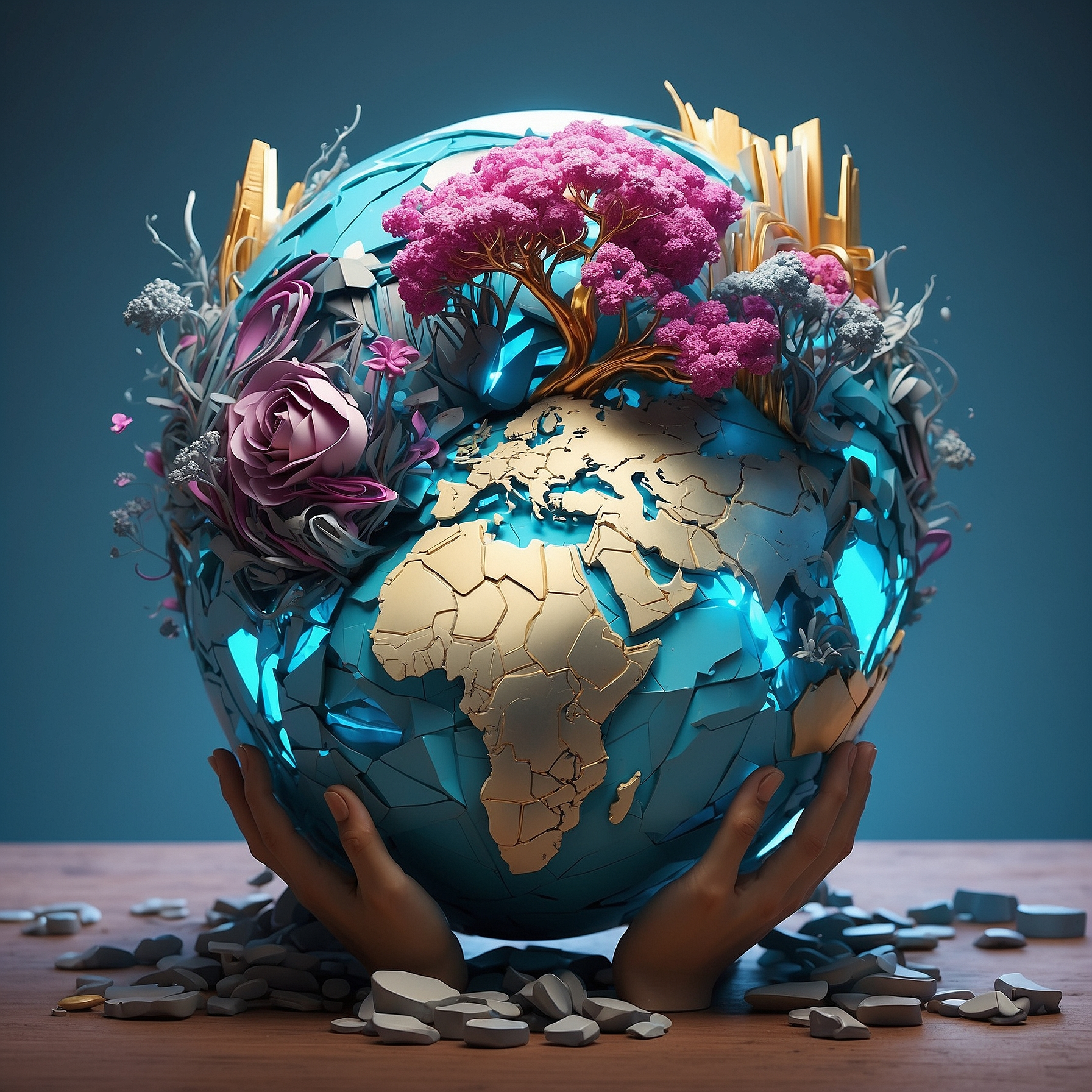Alright, let’s dive into the wild world of economies! Picture this: economies are like different species in a vast jungle—some are fully grown giants (developed economies), others are saplings just sprouting (developing economies), and then there are the energetic adolescents bursting with potential (emerging economies). Each has its own quirks, charms, and challenges, kind of like your eclectic group of friends.
So, what’s the deal with emerging economies? They’re the ambitious ones climbing the ladder with rapid economic growth, fueled by a large youth population that’s ready to shake things up. Their middle class is expanding faster than your favorite jeans after the holidays, and they’ve got regulatory bodies trying to keep everything in check (most of the time, anyway).
The International Monetary Fund (IMF)—think of them as the financial referees—have tagged about 20 countries as emerging and developing economies. Heavy hitters like Argentina, China, Egypt, India, and South Africa made the list. In 2021, these powerhouses contributed a whopping 34% of the world’s nominal Gross Domestic Product (GDP) and an eye-popping 46% in purchasing power parity (PPP).

But how does a country snag the “emerging economy” title? The IMF doesn’t just toss it around like confetti. They look at a mix of factors:
Systemic Presence: Think size matters? So does the economy’s heft—its GDP, the headcount of its population, and its slice of the global trade pie.
Market Access: It’s all about how much the country is playing ball in international finance. Do they have significant external debt? Are they hobnobbing with big institutional investors? Are they issuing international bonds like they’re Pokémon cards?
Income Level: This one’s straightforward—how much moolah does the average person make? The GDP per capita in US dollars is a solid indicator.
International Monetary Fund (IMF)
Curious about how developing countries stack up? Check out: Developing Countries’ Characteristics
What Is an Emerging Economy?
Imagine an emerging economy as a teenager—not quite a grown-up (developed economy) but definitely not a kid anymore (developing economy). It’s in that exciting growth phase where everything is changing rapidly. These economies are buzzing with rapid development and expansion, thanks to high production levels driven by industrialization that’s on overdrive.

But let’s keep it real—they haven’t hit the high notes of a developed economy just yet. We’re talking about factors like high per capita income, advanced technology that’s out of sci-fi movies, and a quality of life that has you sipping lattes on a Tuesday afternoon. Emerging economies are getting there, but they’re still on the journey.
On the flip side, they’ve moved past the developing economy stage, which often relies heavily on agriculture and has a lower Human Development Index (HDI). Poverty rates are higher there, and industrial sectors are still finding their footing.
So, in a nutshell, emerging economies are like that underdog sports team that’s suddenly winning games left and right. They’ve got high local and international growth rates, improving living standards, and a production level that’s kicking into high gear, boosting their GDP.
Why should you care? Well, emerging economies play a huge role in globalization. They’re often mixed economies or free markets, fostering innovation and competition like it’s going out of style. This environment encourages the creation of new and advanced products and services—think smartphones, green tech, you name it—thanks to fierce competition between companies.
The World Bank gives us some staggering stats: emerging economies make up 75% of the world’s population and represent about one-third of global GDP. They’re the engines revving up global growth.
Want to understand more about how mixed economies work? Dive into: Mixed Economy Characteristics
Characteristics of Emerging Economies
- Attractive Markets
- Fast Economic Growth
- High Production Levels
- Increase in the Middle Class
- Increased Exports
- Large Youth Population
- Market and Currency Volatility
- Presence of Regulatory Bodies
- Transitional Nature
- Upper-Middle Per Capita Income (PCI)
1. Attractive Markets
Emerging economies are like the new kid on the block that everyone wants to be friends with. Why? Because their markets are super attractive to investors, offering the tantalizing promise of high returns. It’s the financial equivalent of finding a rare collectible at a garage sale.
Starting a new business or expanding an existing one isn’t cheap—it often requires significant capital. But here’s the catch: many businesses in emerging markets don’t have deep pockets. They rely on investors—both individuals and corporate bigwigs—who are willing to inject cash into their ventures.
Plus, these countries are often sitting on untapped natural resources like crude oil and solid minerals. Exploiting these resources usually demands hefty investments, meaning those who get in early can enjoy a period of monopoly. It’s like having the only water source in a desert—you call the shots and reap the rewards.
During this monopoly phase, companies can recoup their initial investments and then some, especially if they can export to countries willing to pay top dollar.
Now, let’s talk risk and reward. In the investment world, the riskier the venture, the higher the potential return. Since emerging markets come with their fair share of uncertainties—market volatility, political instability, you name it—businesses often dangle higher returns to lure in investors who might otherwise hesitate.
2. Fast Economic Growth
Buckle up, because emerging economies are on the fast track! One of their hallmark characteristics is fast economic growth. This isn’t just a slight uptick; we’re talking about economies growing like weeds after a rainstorm.
This rapid growth is powered by industrialization that’s firing on all cylinders, boosting production levels to new heights and allowing these countries to ramp up their exports.
Governments in emerging economies often play fairy godmother, implementing policies that encourage business participation. Think tax holidays, reduced tariffs, infrastructure projects, and financial aid to homegrown companies.
They’re also courting foreign investors by making it easier and cheaper to do business. The result? More jobs, increased disposable income, higher investment levels, better infrastructure—the whole nine yards. It’s a domino effect leading to even faster economic growth.
3. High Production Levels
Another standout feature is the sky-high production levels. Thanks to rapid industrialization, these economies are churning out goods like there’s no tomorrow.
Picture this: A shoe manufacturer used to produce 50 pairs a day using old-school methods. With newfound access to funding and investors, they can invest in advanced machinery. Suddenly, they’re cranking out 100 pairs daily without breaking a sweat.
But it’s not just about the technology. Cheaper labor and lower tax rates compared to developed nations mean companies have more cash on hand. They can reinvest those savings back into the business, scaling up production even further. It’s a win-win that fuels economic growth.
4. Increase in the Middle Class
As new businesses sprout and existing ones expand, job opportunities blossom. More people land well-paying jobs, moving from poverty into the burgeoning middle class.
With higher incomes, people can afford not just the necessities but also some of life’s little luxuries. Think better housing, education, healthcare—you know, the good stuff.
This economic uplift often sparks a hunger for knowledge. People pursue higher education and specialized skills to keep pace with a rapidly changing economy. It’s like a positive feedback loop—the more educated the workforce, the more competitive the economy becomes.
5. Increased Exports
When production levels shoot through the roof, domestic demand can’t keep up. What do you do with all that extra stuff? You export it!
Emerging economies ramp up their exports, targeting international markets hungry for their goods. The allure isn’t just in offloading surplus products; it’s also about higher profits. Selling to countries with stronger currencies can significantly boost revenues.
6. Large Youth Population
Emerging economies often boast a large youth population. According to the IMF, many have populations exceeding 5 million, with 40-60% being young people.
This demographic is a goldmine. A youthful workforce means a steady supply of labor to fill jobs and drive further economic growth. They’re energetic, adaptable, and often tech-savvy—exactly what modern industries need.
7. Market and Currency Volatility
Now, it’s not all smooth sailing. Emerging economies are prone to market and currency volatility. Their markets aren’t as stable as those in developed countries, making them sensitive to various factors like commodity price fluctuations, interest rates, and inflation.
Political instability or natural disasters—think earthquakes, floods, droughts—can throw a wrench into the economic machinery, disrupting business operations and investor confidence.
Currency swings add another layer of complexity. A change in the value of global currencies like the Euro or US Dollar can significantly impact emerging economies, especially if they rely heavily on imports. It’s a tightrope walk between growth and instability.
8. Presence of Regulatory Bodies
To navigate these challenges, emerging economies often establish regulatory bodies to oversee business operations. These can be government agencies that certify product quality, issue licenses, and enforce compliance with laws.
Professional organizations also step in to maintain industry standards and professionalism. They help ensure fair competition, mediate disputes, and keep the financial markets running smoothly. Think of them as the rulebook keepers in a high-stakes game.
9. Transitional Nature
Emerging economies are in a fascinating transitional phase. They’re evolving from developing to developed status, and this journey brings several significant changes:
- Focus on Industrialization: Shifting from agriculture to manufacturing and services.
- Increased Access to Funds: More capital becomes available for businesses through investments and loans.
- Expansion of International Trade: Companies look beyond borders to grow their markets.
- Job Creation: New industries and businesses mean more employment opportunities.
- Heightened Competition: As markets open up, companies face stiffer competition, driving innovation and efficiency.
Countries that successfully manage this transition often graduate to full-fledged developed economies, reaping the benefits of sustained growth and stability.
10. Upper-Middle Per Capita Income (PCI)
Last but not least, let’s talk money—specifically, per capita income (PCI). This metric divides a country’s gross national income (GNI) by its population, providing an average income per person.
Here’s how the World Bank classifies economies for the 2024 fiscal year:
- Low-income economies: GNI per capita of $1,135 or less.
- Lower middle-income economies: GNI per capita between $1,136 and $4,465.
- Upper middle-income economies: GNI per capita between $4,466 and $13,845.
- High-income economies: GNI per capita of $13,846 or more.
Emerging economies typically fall into the upper middle-income category. This means citizens earn a decent wage, allowing for a reasonable standard of living. As these economies grow, the PCI increases, moving them closer to the high-income bracket associated with developed countries.
Eager to explore different economic systems? Check out: Socialism Characteristics: Socialist Economy Features
Takeaways
So there you have it—a whirlwind tour of the characteristics of emerging economies. They’re dynamic, rapidly growing, and full of potential. With attractive markets, fast economic growth, high production levels, and an increasing middle class, they’re making significant strides on the global stage.
Sure, they face challenges like market volatility and the complexity of transitioning to a developed economy. But with the right policies, regulatory bodies, and a driven population—especially the youth—they’re well-positioned to overcome hurdles.
These unique features not only set emerging economies apart but also make them vital players in the global economy. Keep an eye on them—they’re shaping the future in real-time.
